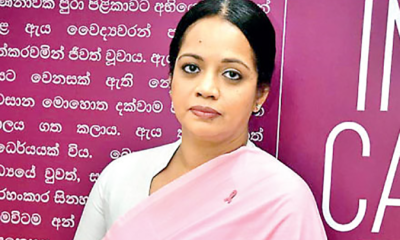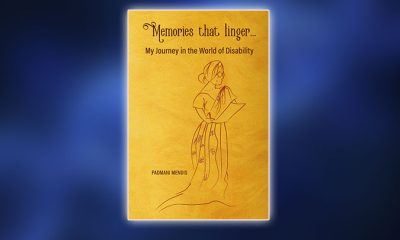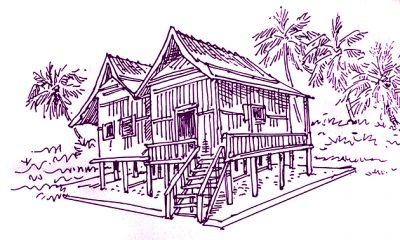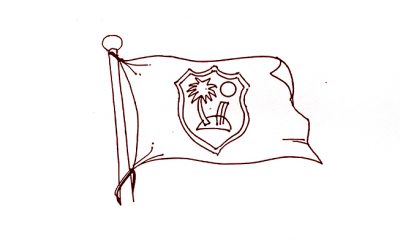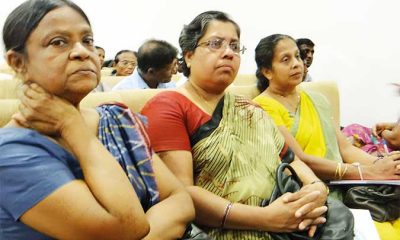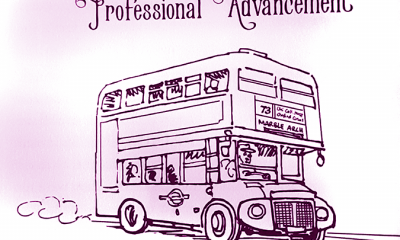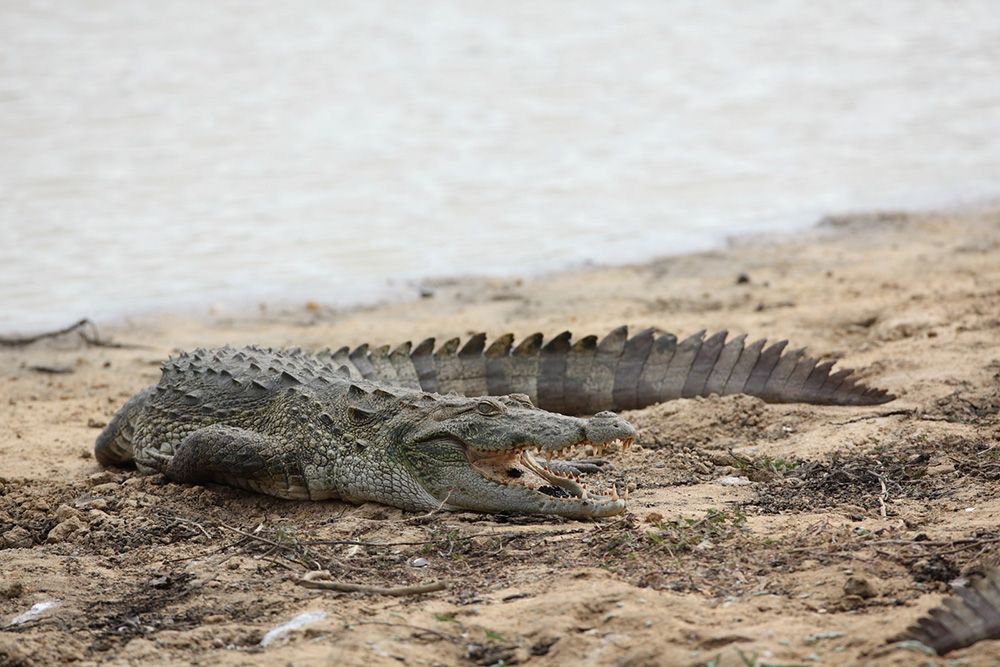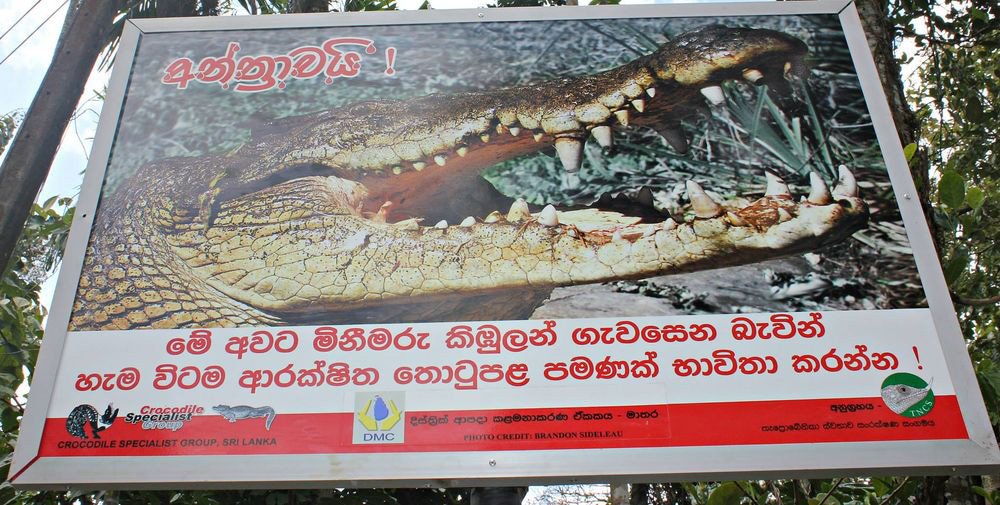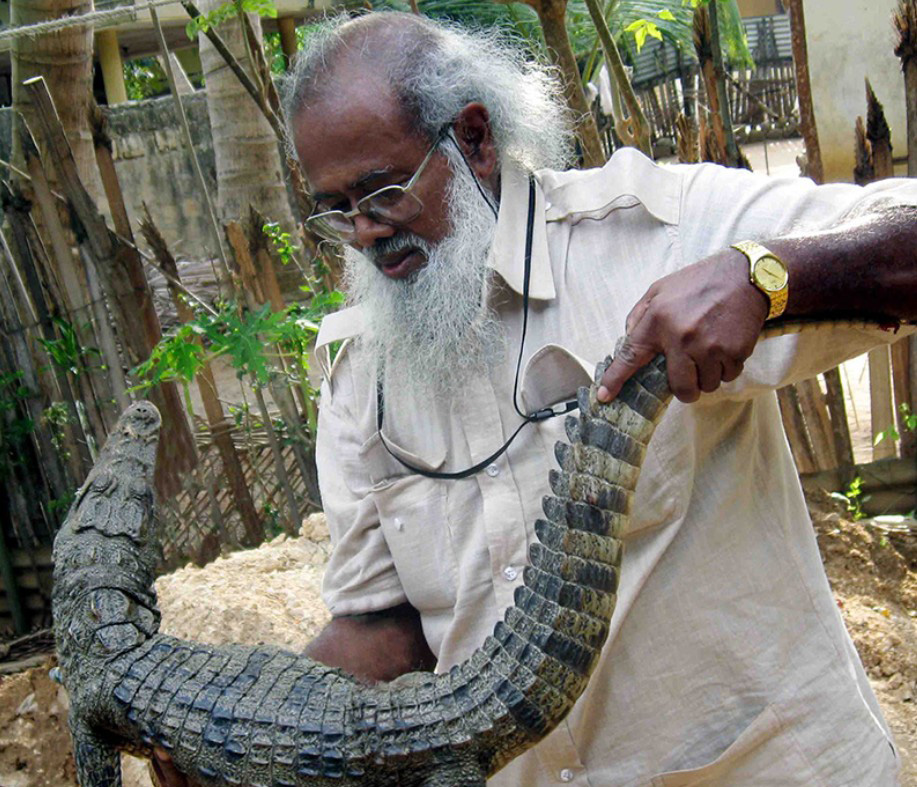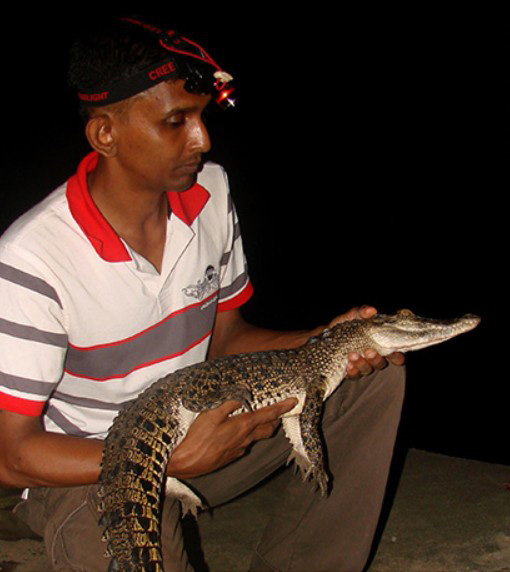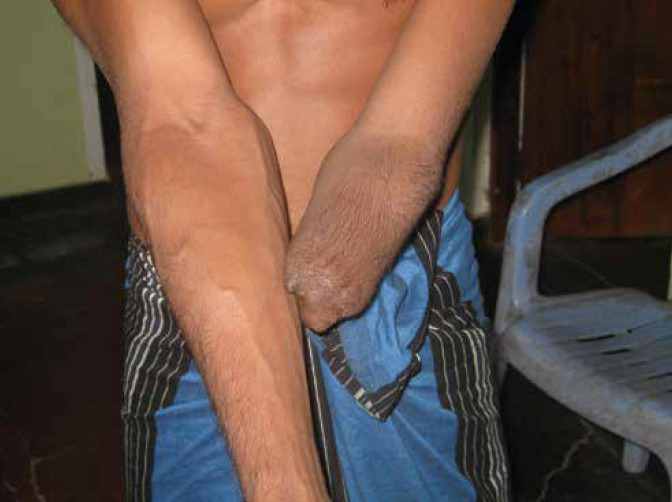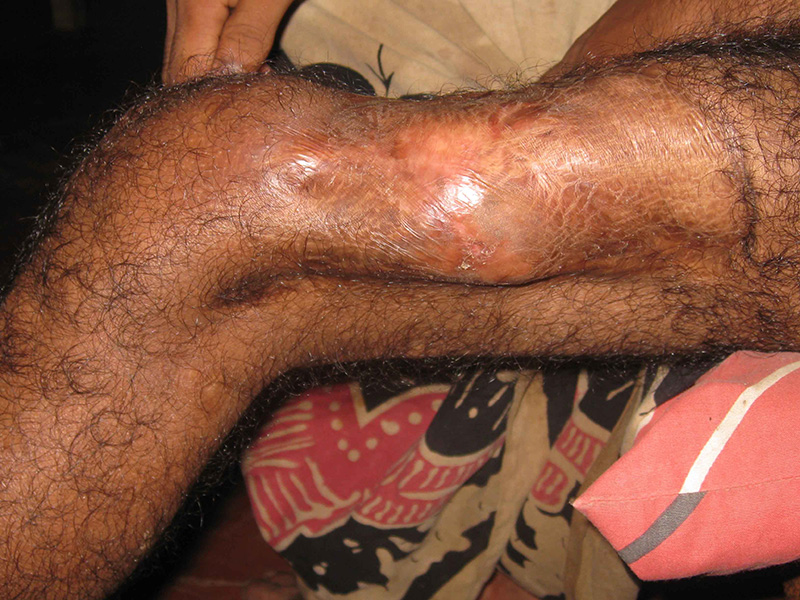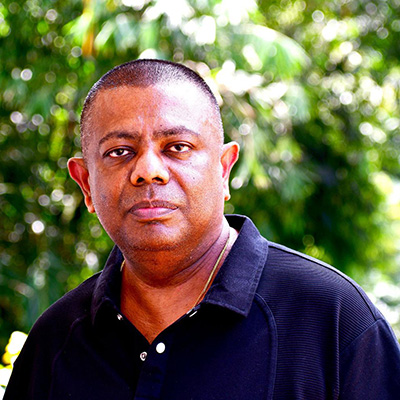Features
Imran, a baby born without arms and Ayu, a teen with Down’s Syndrome
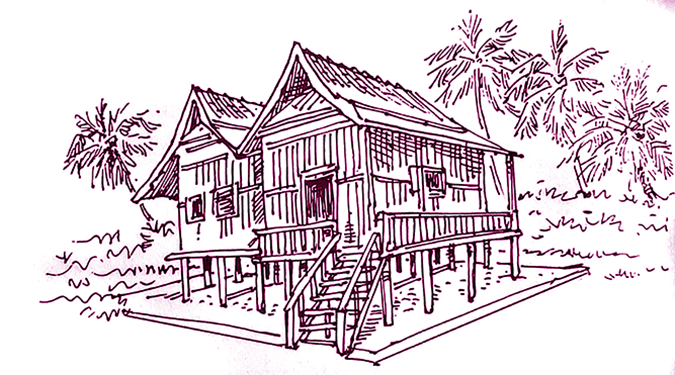
Exploring Geneva with my colleagues
(Excerpted from Memories that linger: My journey is the world of disability by Padmani Mendis
My responsibility (in Malaysia) was to facilitate two training courses. One was five weeks long and was for social welfare assistants and other officers from the district who will initiate CBR here in this part of Kuala Terengganu. The second of the courses was for two weeks and was for social welfare officers from other selected states as well. Participants of this second course will be responsible for planning and developing CBR projects in their own states. We discussed how monitoring and evaluation could be carried out as a continuous process during project development and the material in the Manual for measuring these.
All through my three-month assignment I had as my national counterpart a Social Welfare Officer from the Training Division of the Ministry of Social Welfare. She was an experienced trainer and we shared our teaching tasks. When I left, I was confident that she will be quite capable of carrying out the training function that we had carried out during our time together. The Secretary of the Ministry in Kuala Lumpur and that of the State took personal responsibility to ensure the CBR programme will benefit their disabled people.
In Batu Rakit, the work that was started during the training course blended with field work. In both courses it was possible to spend much time in field learning and teaching. We met community leaders in Batu Rakit for mobilisation. We also made visits to the homes of people who were in need of interventions. Many children were not going to school. Some immediate improvement was evident soon after starting CBR. Two children started going to kindergarten. Others who had been isolated before were participating with the family, going visiting together and so on. Many showed functional improvement.
The seed had been sown. How would it grow?
Two disabled individuals and another family stand out in my mind from those that we visited. One was a baby boy called Imran, six months of age. Imran had been born without both arms. He was not sitting up by himself as yet and spent most of his time lying on his mat and cooing. His mother appeared not to know quite what to do. We talked with her and introduced to her the possibility of teaching Imran to use his feet as his hands.
She welcomed the idea. His mother propped him up with pillows and gave him the toys that lay around him to hold. Imran soon caught the idea. It is of course natural that babies should do so. It is just that the mother either had not thought of the possibility, or did not want him to use his feet for some reason.
When we returned a few days later we found his sisters playing with Imran with great fun and making lots of noise; they were throwing back and forth a colourful cloth ball. Other playthings lay around on the floor. The Social Welfare Assistants taught Imran’s mother how to use the package on play activities from the Manual to take his development further. They taught her to assess at which stage of development Imran was at in areas such as communication, movement and so on. Then they showed her how to select corresponding play activities from the Manual to take him to the next level of development.
We visited Imran once more before I left. He was now sitting up on his own. And he was discovering with joy what a lot he could do with his feet. Later he would stand, walk and run about with neighbourhood playmates like any child would. He would go to school and out on trips with his family. Grow up to be an independent young man. He may now be in the fourth decade of his life. Where are you now Imran? How are you doing?
The second individual was Ayu, a young girl of fifteen years. She had Down’s Syndrome with some intellectual impairment and difficulty in learning. Here the mother cared for Ayu completely not letting Ayu do anything by herself, including washing, bathing and all other self-care activities. Ayu never went out of the house. We talked with both mother and daughter who were alone at home at that time. Ayu talked with us and responded to us shyly. We asked her whether she would like to be able to feed herself so her mother could do something else at that time. She nodded her head happily. The Social Welfare Assistants talked for some time with mother and daughter. They talked about going out to meet neighbours.
After explaining to them about it, the Social Welfare Assistants left relevant material from the WHO Manual for the mother and daughter. They asked them to look at it and see if they could do some of the things that were suggested. When we went back in five days the mother was preparing the family meal. Ayu was sitting with her in the kitchen cleaning vegetables. The mother said that Ayu was helping her now with simple tasks. The mother took Ayu out to the village – Ayu had gone with her to a meeting of the women’s group the previous day. Ayu had been very happy and the women had talked a lot with her.
The third I recall is of visits to a family. A home we visited quite early on in the programme. When we entered, we found the family ready to receive us. The mother, father and with them, three young children. The two older children lay on mats while a younger child was sitting up. All three were boys. All three had a progressive muscular condition. All three had gone to school but as each reached the age of ten to eleven they had dropped out because they could no longer move independently. Now the older two had to be fed, washed and clothed. The youngest needed assistance. We talked with the family for a while. The biggest problem I saw here was that the family was completely isolated with no help and no social support.
Afterwards, I discussed with the Social Welfare Assistants what they would do to improve the situation of the boys and the family. I visited this family again before I left. The mother, along with the three boys, greeted us with a smile. She said her husband had been found work with a farmer. She herself no longer felt alone because her neighbours and even the community leaders visited her. She had made two special friends in whom she could confide. One would sometimes stay with the boys so she could go out to visit family and friends.
Former school friends of the boys visited. They shared with her boys some of what they had learned at school. She felt what was important is that her boys now had friends with whom they could play and interact.
The Social Welfare Assistants were hoping to soon deliver three wheelchairs to the home so that the boys could be taken out into the kampong. So here, in the presence of severe disability, the therapy or the medical rehabilitation required by the boys was not available. But the social impact of CBR was remarkably evident.
Many are the stories of how a visit from a trained Community Worker could make such a difference to the quality of life of individuals and families living in somewhat different circumstances. How will Ayu’s life change with the visits from the Social Welfare Assistant and with interest taken by the women in the village? The Social Welfare Assistant planned to join a meeting of the women and then take Ayu to other activities in the village. Will this make a difference to other disabled people in the village as well as to Ayu? What will be the quality of life of the three boys? Time will tell.
Malay Houses
Although the rest house in which I lodged was made of brick and mortar, other houses in the Kampongs were stilt houses. Kampongs are what villages are called in Malaysia. Stilt houses are the traditional Malay architecture. Wooden houses built on thick strong pillars. There is a central pillar surrounded by may be by six to twelve pillars spaced around the periphery and some closer to the central pillar, depending on the size of the house. The roofs were also made of timber. They were high allowing for good ventilation in a humid climate. The walls of the houses in Batu Rakit were made of wood because that was plentiful. I was told that in some areas walls were made of bamboo. The space under the house was used for storage.
Houses were generally spaced out in large compounds. In their compounds owners had planted trees which they could use in twenty to thirty years to refurbish their houses. Or to extend a house when a child was getting married and needed a home. Extended families lived together, cooking together as one household. I was glad I had lived in Batu Rakit and experienced their traditional lifestyle when I visited their homes.
One entered the house on a wooden ladder. At night they took the ladder up to prevent small animals like rats and bandicoots from climbing into the house. I would not have experienced this traditional Malay architecture and lifestyle had I been confined to Kuala Lumpur as I was on subsequent visits to Malaysia.
Gunnel Nelson
Gunnel Nelson, my much-loved friend and travel companion on my CBR Journey passed away in July 1984. She met with a fatal car accident in Zambia while on an assignment for UNICEF. The assignment concerned improving the lives of disabled children. A cause that Gunnel was devoted to since she started working as an Occupational Therapist, and later as the Principal of the School of Occupational Therapy in Goteborg, Sweden.
With her sudden passing away CBR suffered an unexpected loss – the loss of a human being who would have hastened considerably improvement in the quality of life of disabled people in developing countries. She was firm in her beliefs and convictions with a rare ability to take action to realise them. Like her fellow-Swede Einar, she empathised with the poor and vulnerable and worked tirelessly to bring them social justice. Like Einar and me she was convinced that CBR would initiate changes required to bring disabled people that social justice.
Gunnel and I first met in Geneva in May 1979 when we came together at WHO to work with Einar on developing a strategy for implementing WHO’s new disability policy. Our work in CBR was targeted at enabling disabled people come out of their isolation and exclusion and be included and be participating members within their families and their communities.
Gunnel and I had similar but separate roles in this work. She travelled to certain countries and I to others. But in those all-too-brief five years that we worked together, we met regularly in Geneva and at meetings held in other parts of the world; meetings which brought people together to discuss the way forward for disabled people through CBR. Although the concept and implementation of the CBR system was pioneered in Geneva as a seed, nurturing the growth of it was a global effort involving too many countries to be counted at the time of her passing away.
Gunnel’s work flowed from Geneva like mine, with assisting countries to set up field trials of CBR. She visited first Nigeria in January 1980 for three months. A research project was set up jointly by the WHO Collaborating Centre for Research and Training in Orthopaedics in Lagos and the National Youth Service Corps. She followed this up with a visit in December of the same year.
Her next task was to set up a research project in Kerala, India in collaboration with the Department of Physical Medicine and Rehabilitation of the Medical College in Trivandrum. Her counterpart was Prof. P.B.M. Menon. Before starting on the project with Prof. Menon she visited the WHO South-East Regional Office in New Delhi for discussions. She also met other Rehabilitation Specialists first in New Delhi and then in Kerala to inform them and their institutions and seek their support for the project; and similarly, with the Ministry of Health in Kerala and other professorial staff at the Medical College in Trivandrum.
From Kerala, in November 1980 she proceeded to the Philippines to evaluate the progress made in the ongoing field trial of CBR and of the WHO Manual in the Rizal District of Metropolitan Manila. The project used Primary Health Care as an entry point with PHC workers who had been trained for two years. As in Bacolod City where the Philippines had their first experience of CBR, the urban project here commenced with an intensive information programme.
When we had an assignment in Geneva, Gunnel always drove down from Goteborg so that we had the use of her car in Geneva. Many a time she offered me the use of it. I told her I would not dare to drive in Europe. All those multi-lane high-speed highways and one-way road systems had me quite confused even sitting by her side as a passenger. In these circumstances, I could never be a navigator either.
It was not too difficult to find accommodation in Geneva for a period of three months. Sometimes we stayed separately, sometimes we shared an apartment. I recall how amused she was when once I stayed in a guest house run by the Salvation Army. I had selected it because it was located in the old city which I thought would be interesting.
It was. Only after I went into occupation did I know that it was maintained for retirees from the Red Light District not far away.
The ladies would come to breakfast in flimsy negligees with their faces made up as they would have been made up when they were employed. The trade was lawful in Geneva. The occupant of the room next to mine was quite elderly and confined to bed. She was looked after 24/7 by staff of the guest house. Still dressed in her flimsy negligees. Still with her face made up immaculately.
Most Saturdays we spent working. If we did not, I was out window shopping. On Sunday we would relax, driving out of Geneva. Sometimes we drove around the picturesque countryside of Switzerland through pretty mountain villages. In the spring and summer colourful wild flowers covered every available space on roadsides and spread up the mountainsides. But to me all this appeared to be organised just like all else in Switzerland. I felt that the flowers had been planted there by human hands. Not really wild. But of course they were wild. Just God’s wonders.
One Sunday we drove through the very old village of Gruyere famous for the cheese it produces. Outside this village high up in the Alps, fat and healthy cows were grazing on the mountain sides.
Other Sundays we drove in the French countryside. More often than not I had no French entry visa. But this was no obstacle for someone who knew the back roads where there were unmanned border posts. We would drive around and find a Michelin recommended restaurant to enjoy a late lunch.
On Sundays roads in France were deserted not just of vehicles, but there were no people to be seen either. When once I remarked on this to Einar he said to me, “Do you expect to see people as you would in your part of the world?” Sunday, for the French, was a day spent with one’s own family at home. For us, it was largely visiting extended family and friends. And catching up with the weekly marketing.
Gunnel and I enjoyed the food of foreign countries. In Geneva, after a long day of work, we indulged in dinner at different restaurants. One of our favourites was a Turkish restaurant popular for its Doner Kebab. Lamb grilled on the spit to perfection and served as slices as thin as paper.
In autumn as the weather became colder it was time for genuine Swiss Cheese Fondue – two or three special cheeses melting and blending together in a pot into which one would dip cubes of soft bread and pop them hot into one’s mouth. My favourite Swiss food was Raclette. Although here traditionally, the melting slices of cheese were served on potatoes, I preferred this on toasted bread. Eaten with pickled gherkins and onions.
Knowing my liking for steak, Einar would, on each one of our periods in Geneva, take Gunnel and me to enjoy a good French steak at the Café du Paris on the Rue du Mont Blanc in the centre of the city. Such a popular spot that we had always to stand in a queue to get in.
Before my first visit to Geneva in 1979 I did not drink wine. Associated this with alcohol. But dining out so often with those two Swedes, that habit soon changed. After some time I was persuaded to, “Just try it. Have a sip.” I enjoyed it so much that before the end of three months, I could drink three glasses of it with a meal. And feel no effects of it.Those days in Geneva were memorable – both for the work we did and for the enjoyment we had. I missed having Gunnel to work with. She still lives in my memory from day to day.
Features
When floods strike: How nations keep food on the table
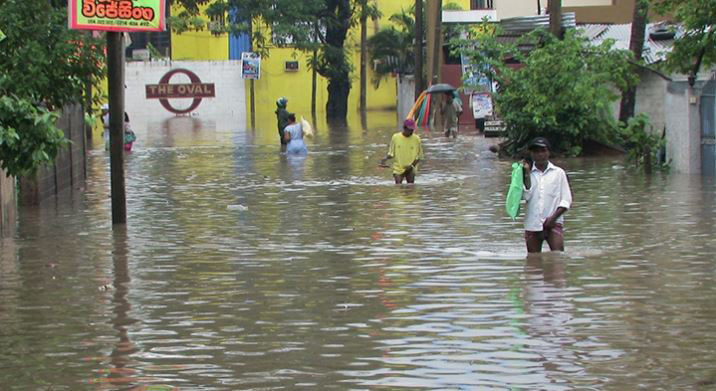
Insights from global adaptation strategies
Sri Lanka has been heavily affected by floods, and extreme flooding is rapidly becoming one of the most disruptive climate hazards worldwide. The consequences extend far beyond damaged infrastructure and displaced communities. The food systems and supply networks are among the hardest hit. Floods disrupt food systems through multiple pathways. Croplands are submerged, livestock are lost, and soils become degraded due to erosion or sediment deposition. Infrastructural facilities like roads, bridges, retail shops, storage warehouses, and sales centres are damaged or rendered inaccessible. Without functioning food supply networks, even unaffected food-producing regions struggle to continue daily lives in such disasters. Poor households, particularly those dependent on farming or informal rural economies, face sharp food price increases and income loss, increasing vulnerability and food insecurity.
Many countries now recognie that traditional emergency responses alone are no longer enough. Instead, they are adopting a combination of short-term stabilisation measures and long-term strategies to strengthen food supply chains against recurrent floods. The most common immediate response is the provision of emergency food and cash assistance. Governments, the World Food Programme, and other humanitarian organisations often deliver food, ready-to-eat rations, livestock feed, and livelihood support to affected communities.
Alongside these immediate measures, some nations are implementing long-term strategic actions. These include technology- and data-driven approaches to improve flood preparedness. Early warning systems, using satellite data, hydrological models, and advanced weather forecasting, allow farmers and supply chain operators to prepare for potential disruptions. Digital platforms provide market intelligence, logistics updates, and risk notifications to producers, wholesalers, and transporters. This article highlights examples of such strategies from countries that experience frequent flooding.
China: Grain Reserves and Strategic Preparedness
China maintains a large strategic grain reserve system for rice, wheat, and maize; managed by NFSRA-National Food and Strategic Reserves Administration and Sinograin (China Grain Reserves Corporation (Sinograin Group), funded by the Chinese government, that underpins national food security and enables macro-control of markets during supply shocks. Moreover, improvements in supply chain digitization and hydrological monitoring, the country has strengthened its ability to maintain stable food availability during extreme weather events.
Bangladesh: Turning Vulnerability into Resilience
In recent years, Bangladesh has stood out as one of the world’s most flood-exposed countries, yet it has successfully turned vulnerability into adaptive resilience. Floating agriculture, flood-tolerant rice varieties, and community-run grain reserves now help stabilise food supplies when farmland is submerged. Investments in early-warning systems and river-basin management have further reduced crop losses and protected rural livelihoods.
Netherlands, Japan: High-Tech Models of Flood Resilience
The Netherlands offers a highly technical model. After catastrophic flooding in 1953, the country completely redesigned its water governance approach. Farmland is protected behind sea barriers, rivers are carefully controlled, and land-use zoning is adaptive. Vertical farming and climate-controlled greenhouses ensure year-round food production, even during extreme events. Japan provides another example of diversified flood resilience. Following repeated typhoon-induced floods, the country shifted toward protected agriculture, insurance-backed farming, and automated logistics systems. Cold storage networks and digital supply tracking ensure that food continues to reach consumers, even when roads are cut off. While these strategies require significant capital and investment, their gradual implementation provides substantial long-term benefits.
Pakistan, Thailand, Indonesia, and Vietnam: Reform in Response to Recurrent Floods
In contrast, Pakistan and Thailand illustrate both the consequences of climate vulnerability and the benefits of proactive reform. The 2022 floods in Pakistan submerged about one-third of the country, destroying crops and disrupting trade networks. In response, the country has placed greater emphasis on climate-resilient farming, water governance reforms, and satellite-based crop monitoring. Pakistan as well as India is promoting crop diversification and adjusting planting schedules to help farmers avoid the peak monsoon flood periods.
Thailand has invested in flood zoning and improved farm infrastructure that keep markets supplied even during severe flooding. Meanwhile, Indonesia and Vietnam are actively advancing flood-adapted land-use planning and climate-resilient agriculture. For instance, In Vietnam’s Mekong Delta, pilot projects integrate flood-risk mapping, adaptive cropping strategies, and ecosystem-based approaches to reduce vulnerability in agricultural and distribution areas. In Indonesia, government-supported initiatives and regional projects are strengthening flood-risk-informed spatial planning, adaptive farming practices, and community-based water management to improve resilience in flood-prone regions. (See Figure 1)
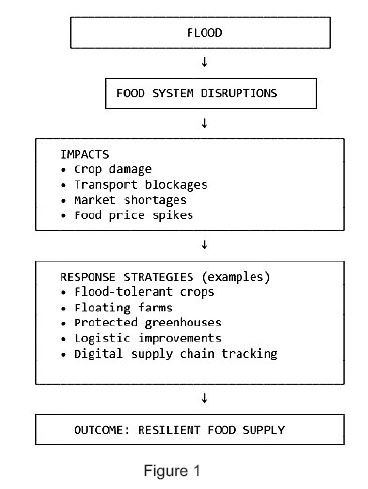 The Global Lesson: Resilience Requires Early Investment
The Global Lesson: Resilience Requires Early Investment
The global evidence is clear: countries that invest early in climate-adaptive agriculture and resilient logistics are better able to feed their populations, even during extreme floods. Building a resilient future depends not only on how we grow food but also on how we protect, store, and transport it. Strengthening infrastructure is therefore central to stabilising food supply chains while maintaining food quality, even during prolonged disruptions. Resilient storage systems, regional grain reserves, efficient cold chains, improved farming infrastructure, and digital supply mapping help reduce panic buying, food waste, and price shocks after floods, while ensuring that production capacity remains secure.
Persistent Challenges
However, despite these advances, many flood-exposed countries still face significant challenges. Resources are often insufficient to upgrade infrastructure or support vulnerable rural populations. Institutional coordination across the agriculture, disaster management, transport, and environmental sectors remains weak. Moreover, the frequency and scale of climate-driven floods are exceeding the design limits of older disaster-planning frameworks. As a result, the gap between exposure and resilience continues to widen. These challenges are highly relevant to Sri Lanka as well and require deliberate, gradual efforts to phase them out.
The Role of International Trade and global markets
When domestic production falls in such situations, international trade serves as an important buffer. When domestic production is temporarily reduced, imports and regional trade flows can help stabilise food availability. Such examples are available from other countries. For instance, In October 2024, floods in Bangladesh reportedly destroyed about 1.1 million tonnes of rice. In response, the government moved to import large volumes of rice and allowed accelerated or private-sector imports of rice to stabilize supply and curb food price inflation. This demonstrates how, when domestic production fails, international trade/livestock/food imports (from trade partners) acted as a crucial buffer to ensure availability of staple food for the population. However, this approach relies on well-functioning global markets, strong diplomatic relationships, and adequate foreign exchange, making it less reliable for economically fragile nations. For example, importing frozen vegetables to Sri Lanka from other countries can help address supply shortages, but considerations such as affordability, proper storage and selling mechanisms, cooking guidance, and nutritional benefits are essential, especially when these foods are not widely familiar to local populations.
Marketing and Distribution Strategies during Floods
Ensuring that food reaches consumers during floods requires innovative marketing and distribution strategies that address both supply- and demand-side challenges. Short-term interventions often include direct cash or food transfers, mobile markets, and temporary distribution centres in areas where conventional marketplaces become inaccessible. Price stabilisation measures, such as temporary caps or subsidies on staple foods, help prevent sharp inflation and protect vulnerable households. Awareness campaigns also play a role by educating consumers on safe storage, cooking methods, and the nutritional value of unfamiliar imported items, helping sustain effective demand.
Some countries have integrated technology to support these efforts; in this regard, adaptive supply chain strategies are increasingly used. Digital platforms provide farmers, wholesalers, and retailers with real-time market information, logistics updates, and flood-risk alerts, enabling them to reroute deliveries or adjust production schedules. Diversified delivery routes, using alternative roads, river transport, drones, or mobile cold-storage units, have proven essential for maintaining the flow of perishable goods such as vegetables, dairy, and frozen products. A notable example is Japan, where automated logistics systems and advanced cold-storage networks help keep supermarkets stocked even during severe typhoon-induced flooding.
The Importance of Research, Coordination, and Long-Term Commitment
Global experience also shows that research and development, strong institutional coordination, and sustained national commitment are fundamental pillars of flood-resilient food systems. Countries that have successfully reduced the impacts of recurrent floods consistently invest in agricultural innovation, cross-sector collaboration, and long-term planning.
Awareness Leads to Preparedness
As the summary, global evidence shows that countries that act early, plan strategically, and invest in resilience can protect both people and food systems. As Sri Lanka considers long-term strategies for food security under climate change, learning from flood-affected nations can help guide policy, planning, and public understanding. Awareness is the first step which preparedness must follow. These international experiences offer valuable lessons on how to protect food systems through proactive planning and integrated actions.
(Premaratne (BSc, MPhil, LLB) isSenior Lecturer in Agricultural Economics Department of Agricultural Systems, Faculty of Agriculture, Rajarata University. Views are personal.)
Key References·
Cabinet Secretariat, Government of Japan, 2021. Fundamental Plan for National Resilience – Food, Agriculture, Forestry and Fisheries / Logistics & Food Supply Chains. Tokyo: Cabinet Secretariat.
· Delta Programme Commissioner, 2022. Delta Programme 2023 (English – Print Version). The Hague: Netherlands Delta Programme.
· Hasanuddin University, 2025. ‘Sustainable resilience in flood-prone rice farming: adaptive strategies and risk-sharing around Tempe Lake, Indonesia’, Sustainability. Available at: https://www.mdpi.com/2071-1050/17/6/2456 [Accessed 3 December 2025].
· Mekong Urban Flood Resilience and Drainage Programme (TUEWAS), 2019–2021. Integrated urban flood and drainage planning for Mekong cities. TUEWAS / MRC initiative.
· Ministry of Agriculture and Rural Affairs, People’s Republic of China, 2025. ‘China’s summer grain procurement surpasses 50 mln tonnes’, English Ministry website, 4 July.
· National Food and Strategic Reserves Administration (China) 2024, ‘China purchases over 400 mln tonnes of grain in 2023’, GOV.cn, 9 January. Available at: https://english.www.gov.cn/archive/statistics/202401/09/content_WS659d1020c6d0868f4e8e2e46.html
· Pakistan: 2022 Floods Response Plan, 2022. United Nations / Government of Pakistan, UN Digital Library.
· Shigemitsu, M. & Gray, E., 2021. ‘Building the resilience of Japan’s agricultural sector to typhoons and heavy rain’, OECD Food, Agriculture and Fisheries Papers, No. 159. Paris: OECD Publishing.
· UNDP & GCF, 2023. Enhancing Climate Resilience in Thailand through Effective Water Management and Sustainable Agriculture (E WMSA): Project Factsheet. UNDP, Bangkok.
· United Nations Development Programme (UNDP), 2025. ‘Rice Bank revives hope in flood hit hill tracts, Bangladesh’, UNDP, 19 June.
· World Bank, 2022. ‘Bangladesh: World Bank supports food security and higher incomes of farmers vulnerable to climate change’, World Bank press release, 15 March.
Features
Can we forecast weather precisely?

Weather forecasts are useful. People attentively listen to them but complain that they go wrong or are not taken seriously. Forecasts today are more probabilistically reliable than decades ago. The advancement of atmospheric science, satellite imaging, radar maps and instantly updated databases has improved the art of predicting weather.
Yet can we predict weather patterns precisely? A branch of mathematics known as chaos theory says that weather can never be foretold with certainty.
The classical mechanics of Issac Newton governing the motion of all forms of matter, solid, liquid or gaseous, is a deterministic theory. If the initial conditions are known, the behaviour of the system at later instants of time can be precisely predicted. Based on this theory, occurrences of solar eclipses a century later have been predicted to an accuracy of minutes and seconds.
The thinking that the mechanical behaviour of systems in nature could always be accurately predicted based on their state at a previous instant of time was shaken by the work of the genius French Mathematician Henri Poincare (1864- 1902).
Eclipses are predicted with pinpoint accuracy based on analysis of a two-body system (Earth- Moon) governed by Newton’s laws. Poincare found that the equivalent problem of three astronomical bodies cannot be solved exactly – sometimes even the slightest variation of an initial condition yields a drastically different solution.
A profound conclusion was that the behaviour of physical systems governed by deterministic laws does not always allow practically meaningful predictions because even a minute unaccountable change of parameters leads to completely different results.
Until recent times, physicists overlooked Poincare’s work and continued to believe that the determinism of the laws of classical physics would allow them to analyse complex problems and derive future happenings, provided necessary computations are facilitated. When computers became available, the meteorologists conducted simulations aiming for accurate weather forecasting. The American mathematician Edward Lorenz, who turned into a reputed meteorologist, carried out such studies in the early 1960s, arrived at an unexpected result. His equations describing atmospheric dynamics demonstrated a strange behaviour. He found that even a minute change (even one part in a million) in initial parameters leads to a completely different weather pattern in the atmosphere. Lorenz announced his finding saying, A flap of a butterfly wing in one corner of the world could cause a cyclone in a far distant location weeks later! Lorenz’s work opened the way for the development branch of mathematics referred to as chaos theory – an expansion of the idea first disclosed by Henri Poincare.
We understand the dynamics of a cyclone as a giant whirlpool in the atmosphere, how it evolves and the conditions favourable for their origination. They are created as unpredictable thermodynamically favourable relaxation of instabilities in the atmosphere. The fundamental limitations dictated by chaos theory forbid accurate forecasting of the time and point of its appearance and the intensity. Once a cyclone forms, it can be tracked and the path of movement can be grossly ascertained by frequent observations. However, absolutely certain predictions are impossible.
A peculiarity of weather is that the chaotic nature of atmospheric dynamics does not permit ‘long – term’ forecasting with a high degree of certainty. The ‘long-term’ in this context, depending on situation, could be hours, days or weeks. Nonetheless, weather forecasts are invaluable for preparedness and avoiding unlikely, unfortunate events that might befall. A massive reaction to every unlikely event envisaged is also not warranted. Such an attitude leads to social chaos. The society far more complex than weather is heavily susceptible to chaotic phenomena.
by Prof. Kirthi Tennakone (ktenna@yahoo.co.uk)
Features
When the Waters Rise: Floods, Fear and the ancient survivors of Sri Lanka
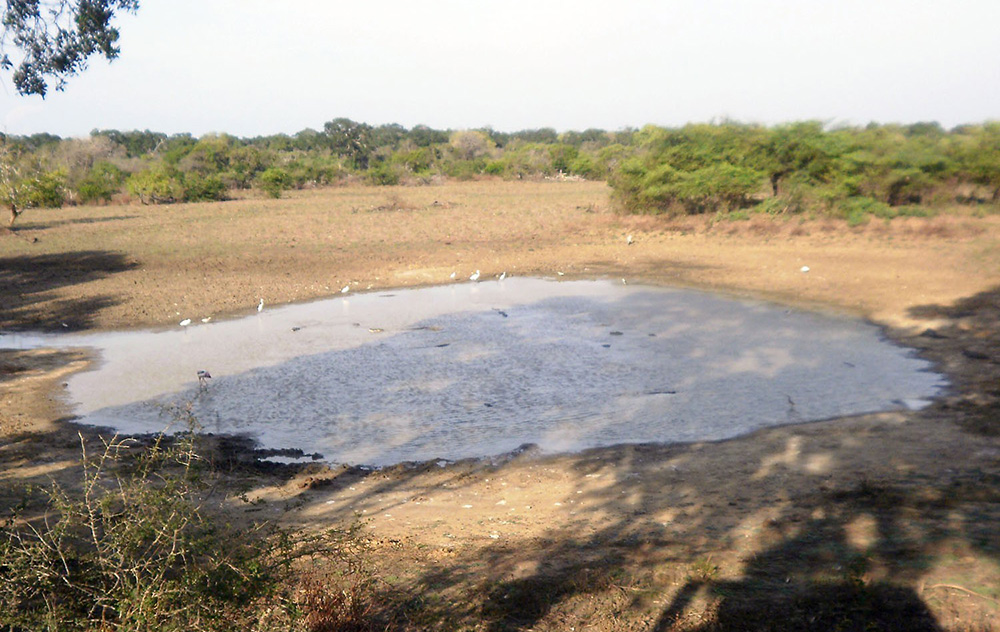
The water came quietly at first, a steady rise along the riverbanks, familiar to communities who have lived beside Sri Lanka’s great waterways for generations. But within hours, these same rivers had swollen into raging, unpredictable forces. The Kelani Ganga overflowed. The Nilwala broke its margins. The Bentara, Kalu, and Mahaweli formed churning, chocolate-brown channels cutting through thousands of homes.
When the floods finally began to recede, villagers emerged to assess the damage, only to be confronted by another challenge: crocodiles. From Panadura’s back lanes to the suburbs of Colombo, and from the lagoons around Kalutara to the paddy fields of the dry zone, reports poured in of crocodiles resting on bunds, climbing over fences, or drifting silently into garden wells.
For many, these encounters were terrifying. But to Sri Lanka’s top herpetologists, the message was clear: this is what happens when climate extremes collide with shrinking habitats.
“Crocodiles are not invading us … we are invading floodplains”
Sri Lanka’s foremost crocodile expert, Dr. Anslem de Silva, Regional Chairman for South Asia and Iran of the IUCN/SSC Crocodile Specialist Group, has been studying crocodiles for over half a century. His warning is blunt.
“When rivers turn into violent torrents, crocodiles simply seek safety,” he says. “They avoid fast-moving water the same way humans do. During floods, they climb onto land or move into calm backwaters. People must understand this behaviour is natural, not aggressive.”
In the past week alone, Saltwater crocodiles have been sighted entering the Wellawatte Canal, drifting into the Panadura estuary, and appearing unexpectedly along Bolgoda Lake.
“Saltwater crocodiles often get washed out to sea during big floods,” Dr. de Silva explains. “Once the current weakens, they re-enter through the nearest lagoon or canal system. With rapid urbanisation along these waterways, these interactions are now far more visible.”
- An adult Salt Water Crocodile (Crocodylus porosus) (Photo -Madura de Silva)
- Adult Mugger (Crocodylus plaustris) Photo -Laxhman Nadaraja
- A Warning sign board
- A Mugger holding a a large Russell ’s viper (Photo- R. M. Gunasinghe)
- Anslem de Silva
- Suranjan Karunarathna
This clash between wildlife instinct and human expansion forms the backdrop of a crisis now unfolding across the island.
A conflict centuries old—now reshaped by climate change
Sri Lanka’s relationship with crocodiles is older than most of its kingdoms. The Cūḷavaṃsa describes armies halted by “flesh-eating crocodiles.” Ancient medical texts explain crocodile bite treatments. Fishermen and farmers around the Nilwala, Walawe, Maduganga, Batticaloa Lagoon, and Kalu Ganga have long accepted kimbula as part of their environment.
But the modern conflict has intensified dramatically.
A comprehensive countrywide survey by Dr. de Silva recorded 150 human–crocodile attacks, with 50 fatal, between 2008 and 2010. Over 52 percent occurred when people were bathing, and 83 percent of victims were men engaged in routine activities—washing, fishing, or walking along shallow margins.
Researchers consistently emphasise: most attacks happen not because crocodiles are unpredictable, but because humans underestimate them.
Yet this year’s flooding has magnified risks in new ways.
“Floods change everything” — Dr. Nimal D. Rathnayake
Herpetologist Dr. Nimal Rathnayake says the recent deluge cannot be understood in isolation.
“Floodwaters temporarily expand the crocodile’s world,” he says. “Areas people consider safe—paddy boundaries, footpaths, canal edges, abandoned land—suddenly become waterways.”
Once the water retreats, displaced crocodiles may end up in surprising places.
“We’ve documented crocodiles stranded in garden wells, drainage channels, unused culverts and even construction pits. These are not animals trying to attack. They are animals trying to survive.”
According to him, the real crisis is not the crocodile—it is the loss of wetlands, the destruction of natural river buffers, and the pollution of river systems.
“When you fill a marsh, block a canal, or replace vegetation with concrete, you force wildlife into narrower corridors. During floods, these become conflict hotspots.”
Past research by the Crocodile Specialist Group shows that more than 300 crocodiles have been killed in retaliation or for meat over the past decade. Such killings spike after major floods, when fear and misunderstanding are highest.
“Not monsters—ecosystem engineers” — Suranjan Karunaratne
On social media, flood-displaced crocodiles often go viral as “rogue beasts.” But conservationist Suranjan Karunaratne, also of the IUCN/SSC Crocodile Specialist Group, says such narratives are misleading.
“Crocodiles are apex predators shaped by millions of years of evolution,” he says. “They are shy, intelligent animals. The problem is predictable human behaviour.”
In countless attack investigations, Karunaratne and colleagues found a repeated pattern: the Three Sames—the same place, the same time, the same activity.
“People use the same bathing spot every single day. Crocodiles watch, learn, and plan. They hunt with extraordinary patience. When an attack occurs, it’s rarely random. It is the culmination of observation.”
He stresses that crocodiles are indispensable to healthy wetlands. They: control destructive catfish populations, recycle nutrients, clean carcasses and diseased fish, maintain biodiversity, create drought refuges through burrows used by amphibians and reptiles.
“Removing crocodiles destroys an entire chain of ecological services. They are not expendable.”
Karunaratne notes that after the civil conflict, Mugger populations in the north rebounded—proof that crocodiles recover when given space, solitude, and habitat.
Floods expose a neglected truth: CEEs save lives—if maintained In high-risk communities, Crocodile Exclusion Enclosures (CEEs) are often the only physical barrier between people and crocodiles. Built along riverbanks or tanks, these enclosures allow families to bathe, wash, and collect water safely.
Yet Dr. de Silva recounts a tragic incident along the Nilwala River where a girl was killed inside a poorly maintained enclosure. A rusted iron panel had created a hole just large enough for a crocodile to enter.
“CEEs are a life-saving intervention,” he says. “But they must be maintained. A neglected enclosure is worse than none at all.”
Despite their proven effectiveness, many CEEs remain abandoned, broken or unused.
Climate change is reshaping crocodile behaviour—and ours
Sri Lanka’s floods are no longer “cycles” as described in folklore. They are increasingly intense, unpredictable and climate-driven. The warming atmosphere delivers heavier rainfall in short bursts. Deforested hillsides and filled wetlands cannot absorb it.
Rivers swell rapidly and empty violently.
Crocodiles respond as they have always done: by moving to calmer water, by climbing onto land, by using drainage channels, by shifting between lagoons and canals, by following the shape of the water.
But human expansion has filled, blocked, or polluted these escape routes.
What once were crocodile flood refuges—marshes, mangroves, oxbow wetlands and abandoned river channels—are now housing schemes, fisheries, roads, and dumpsites.
Garbage, sand mining and invasive species worsen the crisis
The research contained in the uploaded reports paints a grim but accurate picture. Crocodiles are increasingly seen around garbage dumps, where invasive plants and waste accumulate. Polluted water attracts fish, which in turn draw crocodiles.
Excessive sand mining in river mouths and salinity intrusion expose crocodile nesting habitats. In some areas, agricultural chemicals contaminate wetlands beyond their natural capacity to recover.
In Borupana Ela, a short study found 29 Saltwater crocodiles killed in fishing gear within just 37 days.
Such numbers suggest a structural crisis—not a series of accidents.
Unplanned translocations: a dangerous human mistake
For years, local authorities attempted to reduce conflict by capturing crocodiles and releasing them elsewhere. Experts say this was misguided.
“Most Saltwater crocodiles have homing instincts,” explains Karunaratne. “Australian studies show many return to their original site—even if released dozens of kilometres away.”
Over the past decade, at least 26 Saltwater crocodiles have been released into inland freshwater bodies—home to the Mugger crocodile. This disrupts natural distribution, increases competition, and creates new conflict zones.
Living with crocodiles: a national strategy long overdue
All three experts—Dr. de Silva, Dr. Rathnayake and Karunaratne—agree that Sri Lanka urgently needs a coordinated, national-level mitigation plan.
* Protect natural buffers
Replant mangroves, restore riverine forests, enforce river margin laws.
* Maintain CEEs
They must be inspected, repaired and used regularly.
* Public education
Villagers should learn crocodile behaviour just as they learn about monsoons and tides.
* End harmful translocations
Let crocodiles remain in their natural ranges.
* Improve waste management
Dumps attract crocodiles and invasive species.
* Incentivise community monitoring
Trained local volunteers can track sightings and alert authorities early.
* Integrate crocodile safety into disaster management
Flood briefings should include alerts on reptile movement.
“The floods will come again. Our response must change.”
As the island cleans up and rebuilds, the deeper lesson lies beneath the brown floodwaters. Crocodiles are not new to Sri Lanka—but the conditions we are creating are.
Rivers once buffered by mangroves now rush through concrete channels. Tanks once supporting Mugger populations are choked with invasive plants. Wetlands once absorbing floodwaters are now levelled for construction.
Crocodiles move because the water moves. And the water moves differently today.
Dr. Rathnayake puts it simply:”We cannot treat every flooded crocodile as a threat to be eliminated. These animals are displaced, stressed, and trying to survive.”
Dr. de Silva adds:”Saving humans and saving crocodiles are not competing goals. Both depend on understanding behaviour—ours and theirs.”
And in a closing reflection, Suranjan Karunaratne says:”Crocodiles have survived 250 million years, outliving dinosaurs. Whether they survive the next 50 years in Sri Lanka depends entirely on us.”
For now, as the waters recede and the scars of the floods remain, Sri Lanka faces a choice: coexist with the ancient guardians of its waterways, or push them into extinction through fear, misunderstanding and neglect.
By Ifham Nizam
-
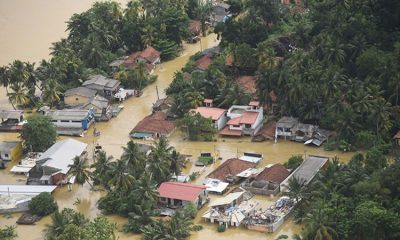
 News6 days ago
News6 days agoWeather disasters: Sri Lanka flooded by policy blunders, weak enforcement and environmental crime – Climate Expert
-

 Latest News7 days ago
Latest News7 days agoLevel I landslide RED warnings issued to the districts of Badulla, Colombo, Gampaha, Kalutara, Kandy, Kegalle, Kurnegala, Natale, Monaragala, Nuwara Eliya and Ratnapura
-
News3 days ago
Lunuwila tragedy not caused by those videoing Bell 212: SLAF
-
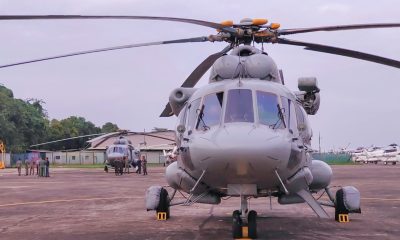
 Latest News7 days ago
Latest News7 days agoINS VIKRANT deploys helicopters for disaster relief operations
-

 News2 days ago
News2 days agoLevel III landslide early warning continue to be in force in the districts of Kandy, Kegalle, Kurunegala and Matale
-

 Latest News5 days ago
Latest News5 days agoLevel III landslide early warnings issued to the districts of Badulla, Kandy, Kegalle, Kurunegala, Matale and Nuwara-Eliya
-

 Features4 days ago
Features4 days agoDitwah: An unusual cyclone
-

 Latest News5 days ago
Latest News5 days agoUpdated Payment Instructions for Disaster Relief Contributions


